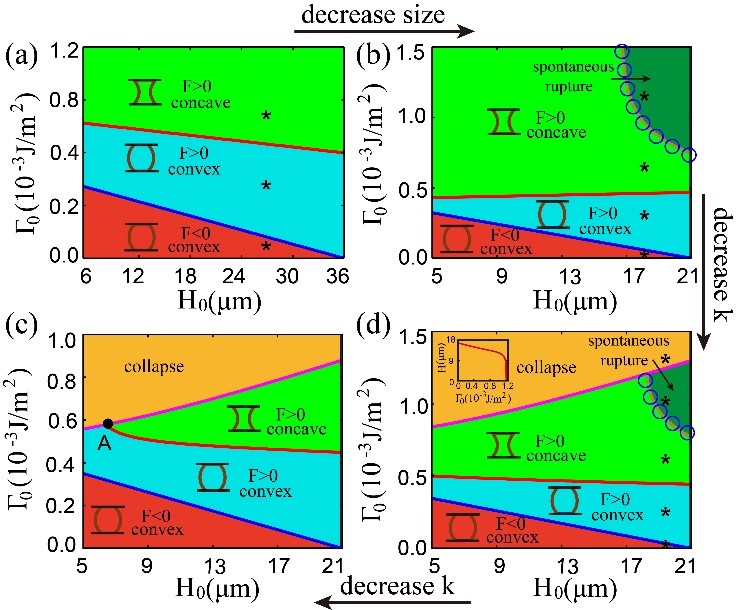Researchers from University of Science and Technology of China (USTC) finds out cell shape and mechanics depends on cell volume and pressure when considering the exchange of water and ions with the environment,which are usually ignored in current theoretical and experimental studies. This work pointed out water and ion exchange with the environment is an essential factor that discriminates living cells from nonliving materials. This work may also have important implications for other biological processes accompanied by significant cell volume changes, such as mitotic cell rounding, cell deformation due to external forces, and haptotaxis or durotaxis induced by heterogeneous adhesion energy density or substrate stiffness.
Cell adhesion is a basic phenomenon in biology. Understanding of the biophysical mechanisms of cell adhesion and cell detachment is vital to cell migration, rigidity sensing, embryonic development, and cell differentiation. However, the current theoretical and experimental studies usually ignore the exchange of water and ions with the environment, i.e., the changes of cellular volume and pressure, during the dynamic adhesion process. And the cell was treated as an elastic body or a liquid droplet in these studies. But recent experiments have found that cell volume can change dramatically when cells suffer from large deformation. Thus, to better understand the fundamental mechanisms of the adhesion-related processes and phenomena, it is highly in demand to develop a new theoretical framework to investigate how the change of cell volume affects the shape and dynamics of adherent cells.
Based on their previous studies on the mechanisms of cellular volume and pressure regulation (Biophysical Journal, 105:609-619 (2013)), and the mechanism of cell migration in confined microenvironments (Cell. 157: 611–623 (2014)), in this work, researchers proposed a theoretical framework to investigate how the changes of volume affects the shape and dynamics of cells adhered between two adhesive surfaces. Researchers showed that adherent cells can be either stable (convex or concave) or unstable (spontaneous rupture or collapse) depending on the adhesion energy density, the cell size, the separation of two adhesive surfaces, and the stiffness of the flexible surface. Strikingly, they found that the unstable states vanish when cellular volume and pressure are constant. They further showed that the detachments of convex and concave cells are very different. The mechanical response of adherent cells is mainly determined by the competition between the loading rate and the regulation of the cellular volume and pressure. Finally, they showed that as an open system the detachment of adherent cells is also significantly influenced by the loading history.

Figure 1, Schematic of cells adhered symmetrically between an adhesive surface and a cantilever (Image by JIANG Hongyuan)

Figure 2, Phase diagrams of cell shapes for various adhesion energy density, cantilever stiffness, and cell sizes (Image by JIANG Hongyuan)
Prof. JIANG Hongyuan's group has made great progress in revealing the effects of volume changes in dynamic adhesion and detachment of cells. This work was published on Physical Review Letters entitled as “Shape and Dynamics of Adhesive Cells: Mechanical Response of Open Systems” on May 19th. Yuehua Yang, a Ph. D. candidate from the School of Engineering Science, is the first author of the paper, and Prof. Hongyuan Jiang is the corresponding authors.This work was supported by the National Natural Science Foundation of China, the Thousand Young Talents Program of China, the Fundamental Research Funds for the Central Universities, and the Strategic Priority Research Program of the Chinese Academy of Sciences.
The link of paper:
https://journals.aps.org/prl/abstract/10.1103/PhysRevLett.118.208102
Contact:
Prof. JIANG Hongyuan
jianghy@ustc.edu.cn